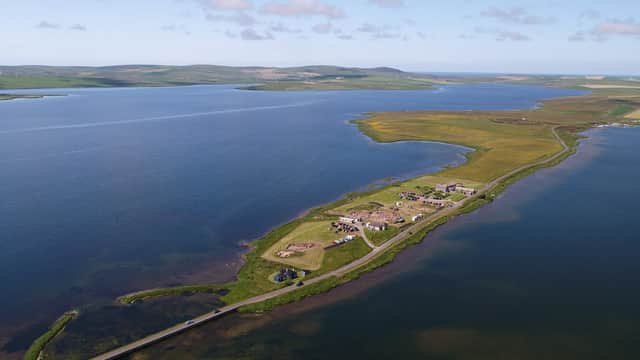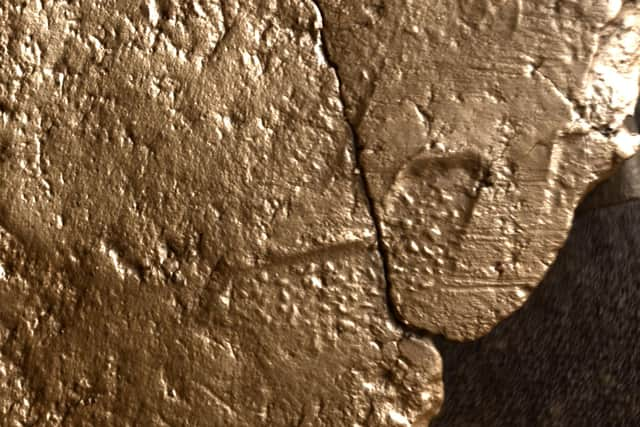Trace of Scotland's oldest piece of woven cloth found on Orkney


A trace of the ancient piece of fabric has been found at Ness of Brodgar in Orkney, which was once a huge Neolithic settlement and place of worship.
While a piece of cloth would rarely last 5,000 years, what has been left is an impression of the fabric pressed into the wet clay of a pot.
Advertisement
Hide AdAdvertisement
Hide AdIt is believed that the impression was made as the potter’s clothing pressed into the vessel, with some of the fabric’s individual fibres trapped in the clay.


To date, there is only one other piece of evidence suggesting the use of woven textiles in Neolithic Scotland - another clay imprint discovered in 1966 in Dumfries and Galloway.
Nick Card, director of the Ness of Brodgar excvation, said the exciting find added to the picture of how life was lived in Neolithic Orkney.
Ness of Brodgar Site Director Nick Card said: “There is no evidence of textile tools available in Neolithic Orkney, suggesting textiles were made by hand, or using tools made with organic materials that have not survived in the archaeological record. This lack of material culture around textile production can help us to infer what techniques they may have been using.”
It is now believed that the people of Ness of Brodgar used coiled mats in the construction of clay vessels, given the number of pieces of broken pot base which carry the impressions of basketry.
Spiral mats may have been placed under the pot as it was being formed to ease it as it turned, it is believed.
The new discoveries have come to light as part of project started last year by the Archaeology Institute of the University of the Highlands and Islands by Jan Blatchford and Roy Towers.
They used Reflectance Transformation Imagine, a technique that merges multiple photographs taken using various angle of light source, to create a highly detailed digital image of an object’s surface.
Advertisement
Hide AdAdvertisement
Hide AdThe results reveal surface details not visible during normal examination.
“Work continues to document and interpret these impressions, which, it is hoped, will provide an invaluable insight into the fibre technology of the Neolithic,” Mr Card added.
A message from the Editor:Thank you for reading this story on our website. While I have your attention, I also have an important request to make of you.With the coronavirus lockdown having a major impact on many of our advertisers - and consequently the revenue we receive - we are more reliant than ever on you taking out a digital subscription.Subscribe to scotsman.com and enjoy unlimited access to Scottish news and information online and on our app. With a digital subscription, you can read more than 5 articles, see fewer ads, enjoy faster load times, and get access to exclusive newsletters and content. Visit https://www.scotsman.com/subscriptions now to sign up.
Our journalism costs money and we rely on advertising, print and digital revenues to help to support them. By supporting us, we are able to support you in providing trusted, fact-checked content for this website.
Joy Yates
Editorial Director